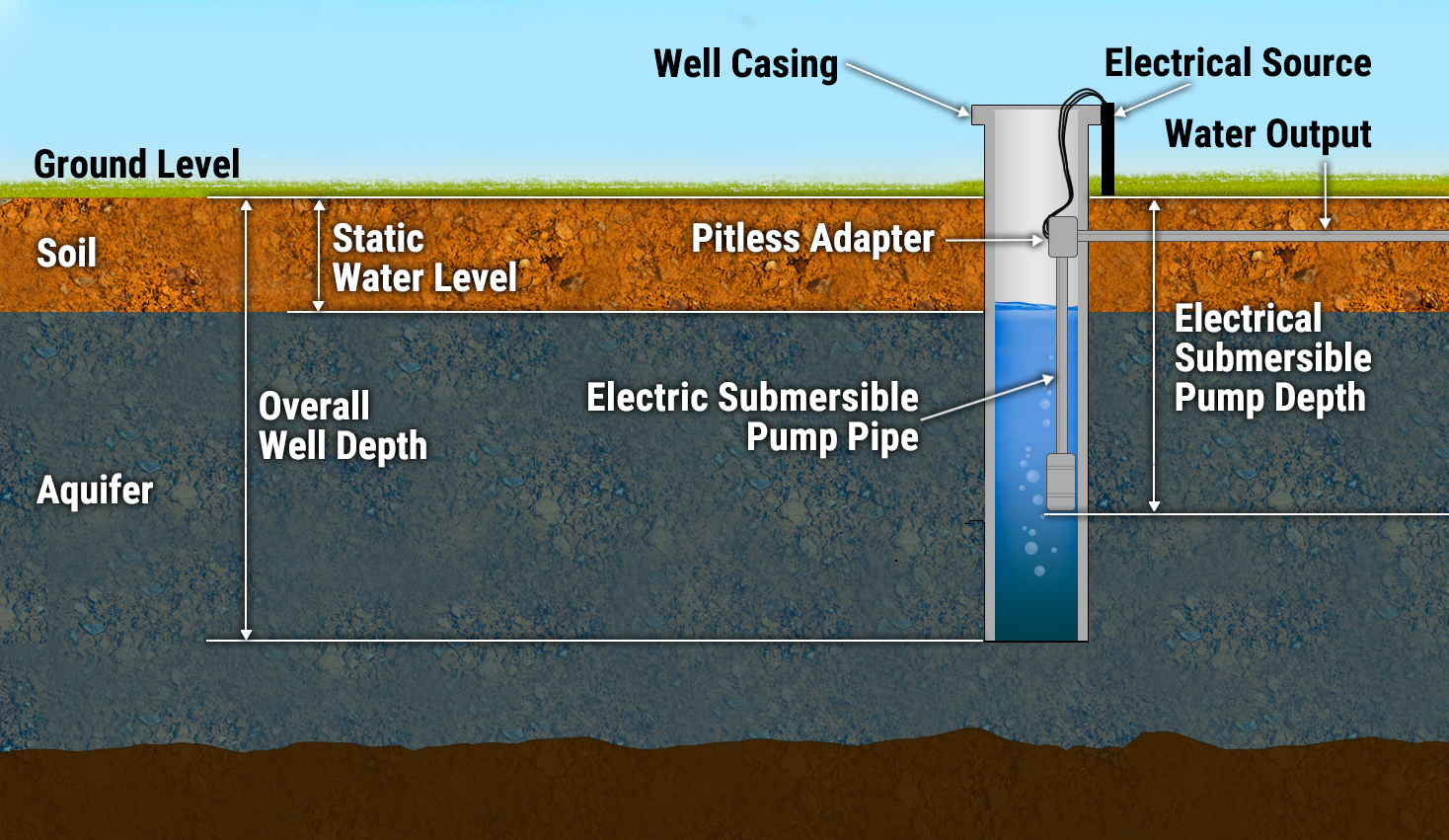
Static water level refers to the distance from the top level of water in a well under normal, undisturbed, no-pumping conditions to ground level. Static water level is best determined when the well has not been pumped for several hours prior to measuring. You may get a false reading if the well was pumped just before the static water level is measured.
This is the single most important well measurement. It helps determine the cylinder size, pipe size, pipe quantity, and pump head style. Enter your response in feet. Be aware that the deeper the Static Water Level the more pipe/rod is required and therefore the price of the system increases accordingly. Please be as accurate as possible with this entry. It impacts the system cost directly. An incorrect response here will result in an incorrect pump system cost quoted to you!
This measurement will always be smaller than the Overall Well Depth, otherwise there is no water in your well. Refer to the diagram.
To measure the Static Water Level, bring a tape measure, adjustable wrench to remove the well cap, and a weighted string to measure the static water level.
With the electricity turned off and the well cap removed, lower a weighted string into the well until you hear it hit the water. Repeat hitting the water to confirm the proper level had been reached. Tie a knot in the string at the top of the casing. Pull the string out of the well and lay it out on the ground. Using a measuring tape, measure the distance from the end of the string to the knot. That distance less the height of the well casing above the ground, in feet, is your Static Water Level.
When the Static Water Level is 25 feet or less, a suction (shallow well) pump can possibly be used. The Total Vertical Lift must be 25 feet or less to utilize a shallow well pump system. If the level is greater than 25 feet, then a Lift Pump utilizing a down the well cylinder is required. However, lift pumps can be used where the Static Water Level is 0-250 feet. This style of pump also must have drop pipe and drop rod that reach from the top of the casing to the cylinder which is typically 20 feet below the Static Water Level.
As Static Water Levels get deeper the level of difficulty to pump the water to the surface increases. This is due to the weight of the water column being lifted. When we spec out your pump system this and many other factors are considered.
All things start with the Static Water Level so take a good measurement to be off to a good start with your project!

